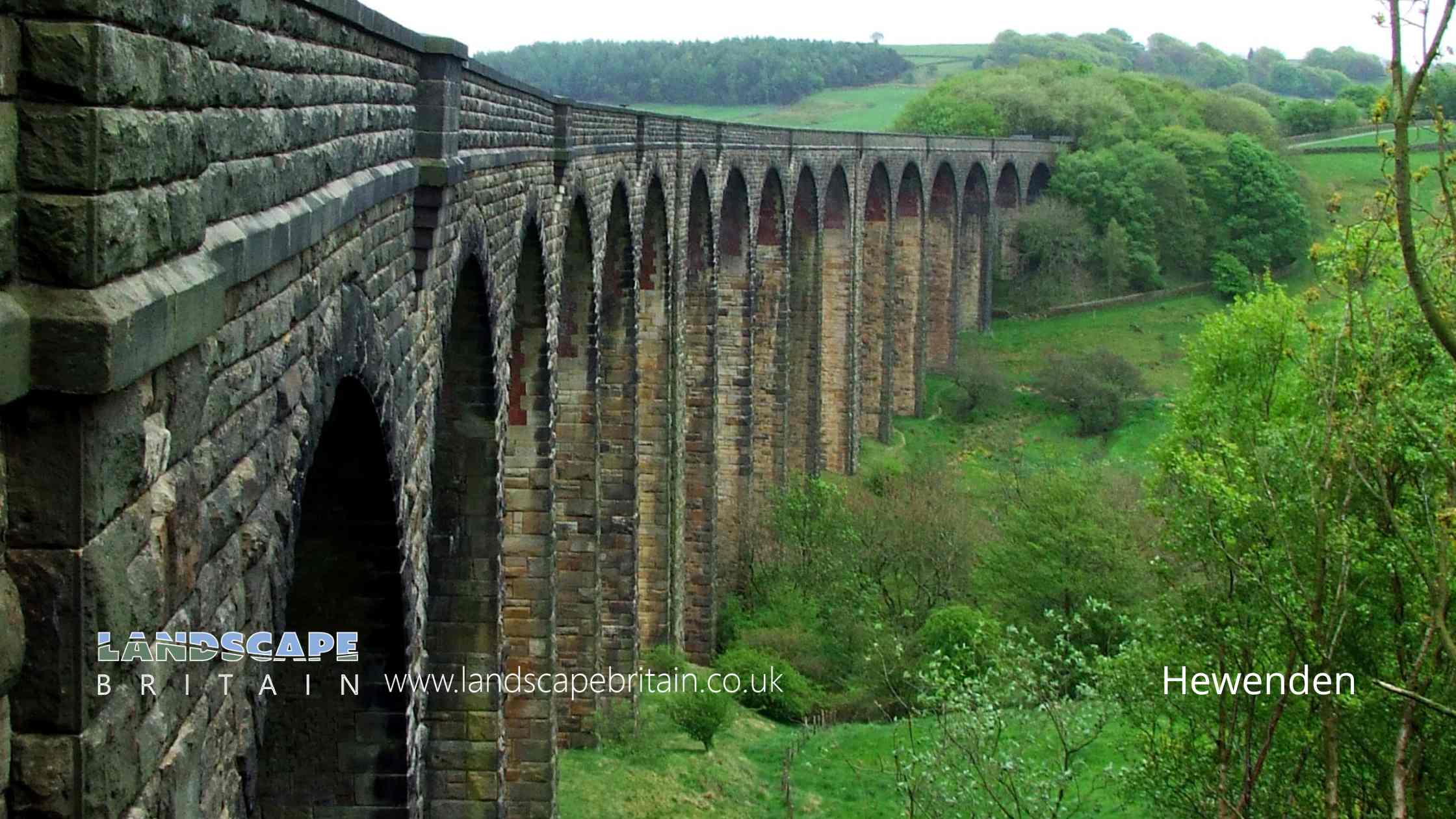
Hewenden Viaduct
Hewenden Viaduct
The Hewenden Viaduct, an impressive architectural marvel, stands tall in the landscape of West Yorkshire, England. Built in the 19th century, it is a testament to the ingenuity of Victorian engineering and design. This historic structure was primarily constructed to serve the needs of the railway system, which was rapidly expanding during the Industrial Revolution. The viaduct spans a remarkable length, crossing over the picturesque Hewenden Valley, and is notable for its series of elegant arches that provide both structural support and aesthetic charm.
The construction of the Hewenden Viaduct was a significant engineering undertaking of its time. Made predominantly from local stone, it features a series of tall, slender arches, which are both functional and visually striking. These arches give the viaduct a delicate appearance that belies its strength and stability. The design not only provided the necessary support for the heavy railway traffic but also minimized the impact on the beautiful valley it spans. The choice of materials and the style of construction reflect the typical Victorian approach to industrial design, where functionality was often combined with a sense of grandeur and beauty.
In the context of railway history, the Hewenden Viaduct played a crucial role. It was part of a broader network of railways that transformed the transportation landscape in Britain, making it possible to move goods and people faster and more efficiently than ever before. The viaduct itself was an essential link in this network, enabling trains to traverse the challenging terrain of the Hewenden Valley. Its construction not only facilitated commerce and travel but also spurred local economic growth, contributing to the industrial development of the region.
Today, the Hewenden Viaduct is celebrated as a historical landmark and a symbol of the industrial heritage of Yorkshire. While it no longer serves the railway, it has found a new life as a feature of a walking and cycling path, allowing people to enjoy its architectural beauty and the stunning natural scenery of the valley. This adaptive reuse is a fine example of how industrial structures can be repurposed to serve contemporary needs while preserving their historical significance and charm. The Hewenden Viaduct remains a point of pride for the local community and a fascinating attraction for visitors interested in industrial history and architectural heritage.
Created: 7 January 2024 Edited: 7 January 2024
Hewenden Viaduct
Local History around Hewenden Viaduct
There are some historic monuments around including:
Rock with single cup near track north of Drake HillLate prehistoric enclosed settlement known as Catstones Ring on Catstones HillRock with shallow cup and ring-markings at the western end of the ridge on Stanbury HillCup, ring and groove marked rock at the base of a wall between East Morton and West MortonCairn 290m north of Woodhead on Harden MoorProminent cup-marked rock east of track, north east of Stanbury HillCarved rock on bank of How Beck, east of path from West Morton to Riddlesden and 440m south west of Barn House FarmSmall cup-marked rock on Stanbury Hill, 40m west of fork in pathCairn 330m north of Woodhead on Harden MoorLate prehistoric enclosed settlement known as Castle Stead RingGroup of five carved rocks on the western ridge of Stanbury HillRing cairn 310m north of Woodhead on Harden MoorLate prehistoric enclosed settlement 150m north of Shaygate Farm, WilsdenCup and groove marked rock between East Morton and West MortonRock with dense concentration of cup marks on Stanbury HillBrow Pit mine shaft, gin circle, spoil heap and tramway, 270m south west of Catherine Slack FarmLate prehistoric enclosed settlement 500m north west of Goose Clough on Ovenden MoorCarved rock east of track north of Drake HillFive carved rocks in Cottingley Woods, 600m NNE of Lee FarmCup marked rock adjacent to wall near road from East Morton to West MortonLate prehistoric enclosed settlement in Crosley Wood, Bingley, 185m north of Scourer BridgeCup and groove-marked rock north of Drake HillLate prehistoric enclosed settlement 350m south west of Goose Clough at Hunter Hill, Ovenden.



